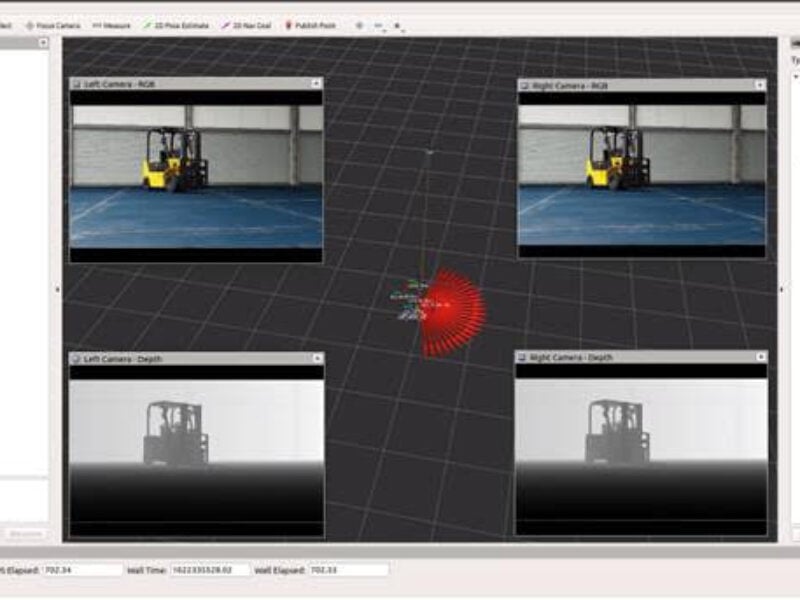
ROS2 AI boost with Nvidia deal
Nvidia and Open Robotics have signed a deal to accelerate the performance of the latest open source Robot Operating System (ROS 2) on the Jetson edge AI platform and GPU-based systems.
Nvidia will provide a suite of tools that will reduce development time and improve performance for developers seeking to incorporate computer vision and AI/machine learning functionality into ROS-based applications.
“As more ROS developers leverage hardware platforms that contain additional compute capabilities designed to offload the host CPU, ROS is evolving to make it easier to efficiently take advantage of these advanced hardware resources,” said Brian Gerkey, CEO of Open Robotics. “Working with an accelerated computing leader like NVIDIA and its vast experience in AI and robotics innovation will bring significant benefits to the entire ROS community.”
Open Robotics will enhance ROS 2 to enable efficient management of data flow and shared memory across GPU and other processors present on the NVIDIA Jetson edge AI platform. This will significantly improve the performance of applications that have to process high-bandwidth data from sensors such as cameras and lidars in real time.
In addition, Open Robotics and Nvidia are working to on simulation interoperability between Open Robotics’s Ignition Gazebo and the Nvidia Isaac Sim on Omniverse. Isaac Sim already supports ROS 1 and 2 out of the box and features an all-important ecosystem of 3D content with its connection to popular applications, such as Blender and Unreal Engine 4.
Ignition Gazebo brings a decades-long track record of widespread use throughout the robotics community, including in high-profile competition events such as the ongoing DARPA Subterranean Challenge.
With the two simulators connected, ROS developers can easily move their robots and environments between Ignition Gazebo and Isaac Sim to run large-scale simulation and take advantage of each simulator’s advanced features such as high-fidelity dynamics, accurate sensor models and photorealistic rendering to generate synthetic data for training and testing of AI models.
Software resulting from this collaboration is expected to be released in the spring of 2022.
Isaac GEMs for ROS are hardware accelerated packages that make it easier for ROS developers to build high-performance solutions on the Jetson platform. The focus of these GEMs is on improving throughput on image processing and on DNN-based perception models that are of growing importance to roboticists. These packages reduce the load on the host CPU while providing significant performance gain.
In addition to being a robotic simulator, Isaac Sim can generate synthetic data to train and test perception models. These capabilities will be more important as roboticists incorporate more AI perception features into their platforms. It’s clear that the better that a robot can perceive its environment the more autonomous it can be, thereby requiring less human intervention.
Once Isaac Sim generates synthetic datasets, they can be fed directly into TAO, an AI model adaptation platform from Nvidia, to adapt perception models for a robot’s specific working environment. The task of ensuring that a robot’s perception stack is going to perform in a given working environment can be started well before any real-data is ever collected from the target surroundings.
Related ROS2 articles
- SLAMcore taps ROS2 for robot navigation
- Adlink partners with FFG for 5G and ROS2 integration
- Renesas teams for micro-ROS framework
- Grai Matter Labs teams for AI SMARC module
Other articles on eeNews Europe
- First industry standard real world AI benchmark
- Galway in line for Intel megafab
- European Chips Act for semiconductor sovereignty
- Return of smartphone manufacturing in Germany
- Top ten tech trends for 2022
 If you enjoyed this article, you will like the following ones: don't miss them by subscribing to :
eeNews on Google News
If you enjoyed this article, you will like the following ones: don't miss them by subscribing to :
eeNews on Google News




